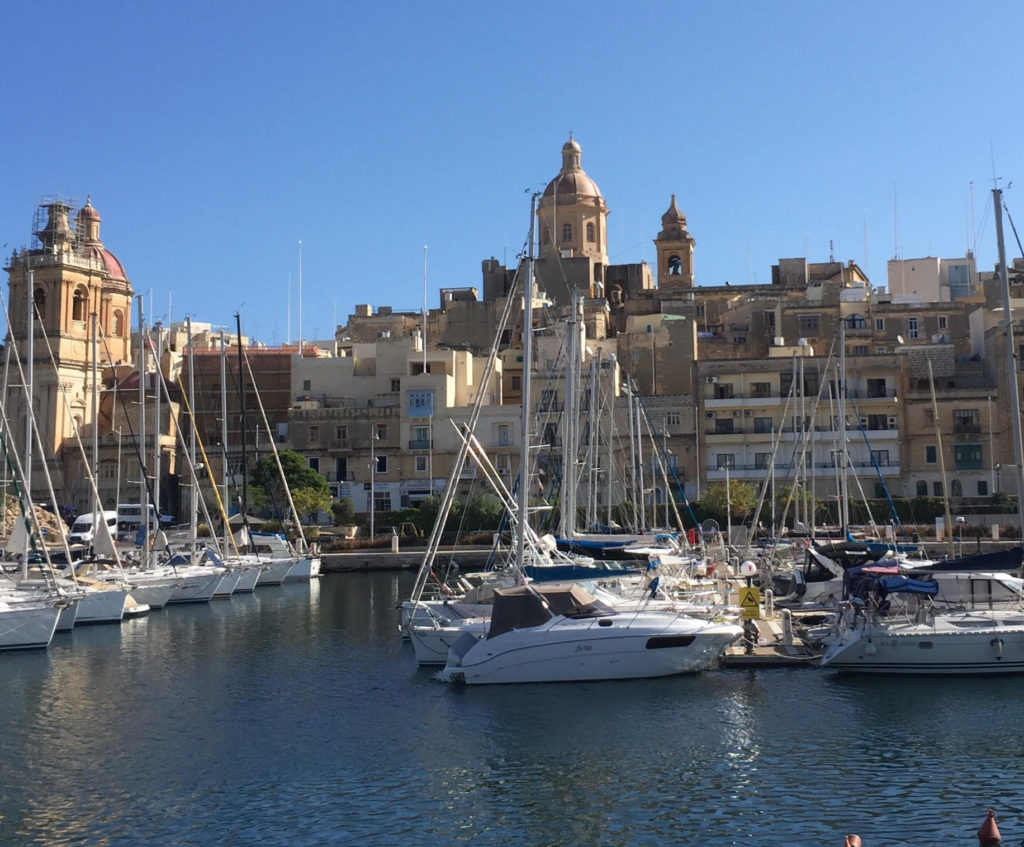
I became aware of the island country of Malta when I was a kid, reading about how 500 Knights Hospitaller led the defenders against the Ottoman Empire in the Great Siege of Malta, in the year 1565.
It is a wonderful yarn, the story of the few and the outgunned who clung on tenaciously against an empire that had suffered very few setbacks in its push to make the Mediterranean into an Ottoman lake.
That the defense was led by the 500 members of a military order that took its name from running hospitals during the Crusades … made it that much better. The notion of an elite force of fighting men with utter devotion to a noble cause, well, it’s hard for the western mind to resist.
What I expected as we steamed toward the little island midway between Sicily and Tunisia was some sort of way of investigating the battle.
What did I get?
A short day filled with disappointment.
The problem with being all fired up about the Great Siege of Malta is that the islands that make up the tiny principality have changed markedly in 550 years — as one would expect.
The areas where the main attacks and resistance sprang … well, just about all of it has been built over, and identifying the place where the knights and their lay allies who did most of the fighting … very hard to find.
Such is the way with many great battles. Civil War battlefields have given way to malls, the D-Day landings are just another bucolic Normandy beach.
And Malta is … well, it’s just kind of shabby.
It looks like it was built several hundred years ago to North African specifications, with little thought to keeping stone buildings fit for living. The architecture is bland, gray and crumbling.
It is hard to imagine that anything important ever happened here.
Yet, it did.
The Ottomans were on a role of conquest, having taken Constantinople (now Istanbul) from the Byzantines in the previous century, then taking over most of the Balkans and, in the 1500s, won several battles against Christian fleets. Suleiman the Magnificent, who ruled the empire, wanted to knock the Christians off the little islands that were impeding his plans for the western Mediterranean.
The knights, however, stopped them.
The knights were led by 70-year-old Grand Master Jean de Valette, for whom Malta’s capital was named, anticipated most of the attacking forces’ moves, and had just enough power and will to keep the attackers at bay.
The numbers were daunting. The invasion force has been estimated at about 30,000, and the defenders were the 500 knights in shining armor plus whatever the local residents could do to help, from behind the battered walls — a defensive force of perhaps 9,000, total.
The Ottomans had a great advantage in artillery, too, an arm of the military that was beginning to dominate battles. The defenders suggested more than 100,000 artillery shells were fired into their side of the lines.
The siege lasted four months, and the Ottomans finally gave it up, demoralized by failure, riddled with disease and aware a Christian relief force was on the way.
The battle mattered because without the Ottomans being checked at Malta, they might have invaded Sicily next and then Spain and perhaps just kept going west till all of Europe was theirs.
Malta had one other moment in military history, during World War II, when it served as “an unsinkable aircraft carrier” for the British, who were locked in a see-saw fight in North Africa versus the Germans and Italians.
So, the romance of the gritty Hospitaller knights and their noble resistance … it remains in my head.
But having seen the dreary and much-changed Maltese landscape, a little of the appeal is gone.

1 response so far ↓
1 cynthia robinson // Oct 21, 2019 at 8:41 AM
So sad to read this — Malta was a place I always thought about visiting…
Leave a Comment